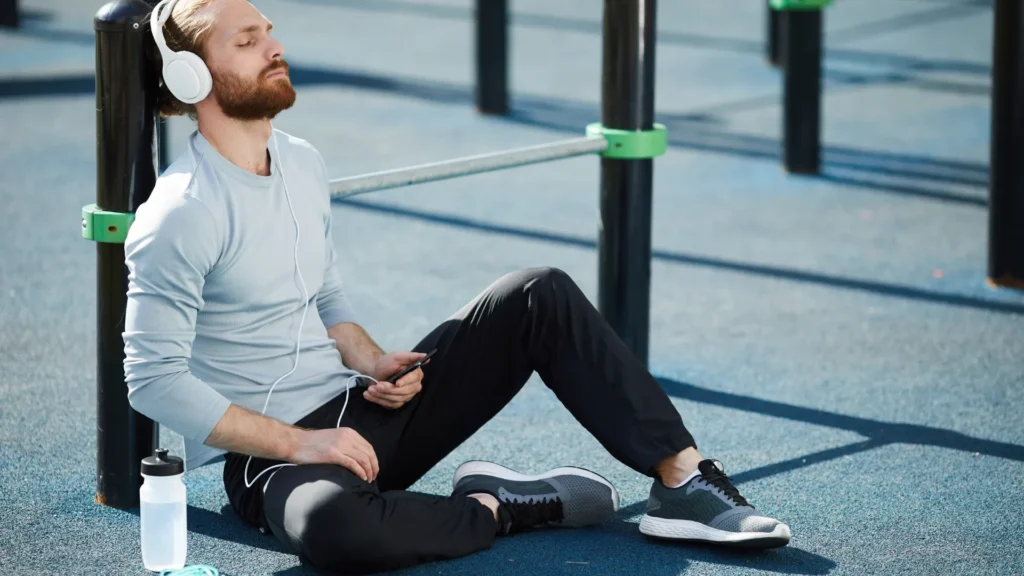
Ever wondered what is visualization training?
Well, it’s your secret weapon for peak performance, and today, I’m diving into how it can transform your game.
So, buckle up, and let’s explore the top 5 visualization techniques that you can start using right now.
Basic Imagery
What is visualization training at its core?
It’s about creating a vivid and controlled environment in your mind.
Start with something straightforward.
Picture yourself gearing up for a practice session or a game.
Visualize lacing up your shoes, the texture of the equipment, and the sounds around the field or court.
Now, move on to visualizing yourself performing.
Imagine the exact movements you’d make in a routine or play: the swing of your arms, the placement of your feet, the smooth execution of your skills.
Feel every detail, from your controlled breathing to the adrenaline pumping through your veins.
This method isn’t just about seeing. It’s about feeling and experiencing the sport in your mind’s eye.
Regular practice can make these mental rehearsals second nature, boosting your confidence and familiarity with the actual performance.
Give it a try and see how vivid imagery can enhance your physical execution!
Progressive Muscle Relaxation and Visualization
Progressive Muscle Relaxation (PMR) combined with visualization isn’t just a cool trick. It’s a powerful tool for any athlete’s mental toolkit.
Start by finding a quiet spot where you can sit comfortably or lie down.
Take a few deep breaths to center yourself.
Now, begin with your feet and work your way up to your head, tensing each muscle group for about five seconds and then slowly relaxing it for 30 seconds.
As you release each muscle, visualize a scene from your sport.
For instance, as you relax your leg muscles, picture yourself running fluidly during a track event, your legs feeling light and responsive.
When you relax your arms, imagine executing a perfect serve in tennis, with your arm moving powerfully and precisely.
Sync each muscle relaxation with a positive visual of peak performance.
This method does more than prepare you mentally.
It links your physical state to your mental exercises.
You’re training your body to feel relaxed and in control right before you mentally rehearse your sports performance.
This dual approach can significantly reduce performance anxiety and increase your mental resilience on the field.
Try incorporating PMR into your pre-game or practice routines and feel the difference in both your body and mind!
Goal-Oriented Visualization
Goal-Oriented Visualization is all about focusing your mental imagery on specific objectives you want to achieve in your sport.
Start by setting a clear, achievable goal.
Maybe it’s improving your time in the 100-meter dash, nailing a complex gymnastic routine, or hitting a personal best in weightlifting.
Once your goal is set, close your eyes and visualize not just the outcome, but the entire process leading up to it.
See yourself in training sessions where you are progressively getting stronger and more skilled.
Visualize the obstacles you might face, such as fatigue or setbacks, and picture yourself overcoming these with determination and focus.
Imagine the day of the competition.
Visualize waking up feeling energized and ready.
See yourself performing with precision, your movements sharp and confident.
And finally, visualize the moment you achieve your goal—the crowd’s reaction, the scoreboard displaying your new personal best, and the pride swelling in your chest.
This focused approach does more than just prepare you for the task. It builds a mental blueprint of the steps needed to succeed, reinforcing your pathway to victory.
Regular practice of this visualization can deepen your commitment and enhance your motivation, making your goals feel within reach each time you close your eyes.
Competitive Visualization
Competitive Visualization is key for preparing mentally for the actual dynamics of competition day.
It’s not just about seeing yourself win. It’s about visualizing the entire competition environment in detail.
Start by imagining the venue filled with spectators and competitors.
Hear the buzz of the crowd, feel the adrenaline pumping as you prepare to perform under pressure.
Picture yourself at the starting line or in position, ready to begin.
Visualize your competitors: their presence, their strengths, and how you stack up against them. Instead of allowing this to intimidate you, let it fuel your determination.
Run through different scenarios in your mind.
Visualize how you handle a setback, like a bad start or a mistake.
Then, see yourself recovering smoothly, refocusing, and regaining your momentum.
Also, picture ideal scenarios where everything goes according to plan, and you perform at your peak.
Imagine interacting with coaches, handling official calls, and responding to the crowd’s reactions.
This comprehensive approach helps you anticipate and prepare for various aspects of the competition, reducing surprises and managing potential stress or anxiety effectively.
By routinely practicing Competitive Visualization, you become mentally equipped to handle the pressures of competitive sports.
This preparedness can greatly enhance your confidence and ability to perform under any circumstances, making it a crucial tool in your mental training arsenal.
Recovery Visualization
Recovery Visualization is all about harnessing the power of your mind to accelerate your body’s healing after strenuous activity or injury.
This technique focuses not just on physical recovery, but on rejuvenating your mental state as well.
Begin by finding a quiet, comfortable space where you can relax without interruptions.
Close your eyes and take deep, soothing breaths to help calm your entire body.
Start visualizing your body healing from the day’s exertions or from any injuries you might be nursing.
Picture the muscles that you’ve worked the hardest, imagining them being infused with nutrients and energy. See them repairing, growing stronger, and more resilient.
Visualize a wave of healing energy passing through your body, starting from your toes and moving upwards.
As this wave moves, it soothes soreness, reduces inflammation, and restores vitality to every cell it touches.
Imagine this process as a bright, warm light that gradually fills you with a sense of well-being and recovery.
Focus on areas that need special attention—whether it’s a strained muscle, a sore joint, or just general fatigue.
Picture these areas receiving targeted healing and care.
Visualize any swelling diminishing, pain easing, and flexibility returning.
End your visualization with a mental image of yourself standing strong, fit, and completely healed, ready to tackle your next athletic challenge with vigor.
Incorporating Recovery Visualization into your regular training routine can significantly improve your overall recovery rate and reduce the risk of future injuries.
It’s a powerful way to ensure you’re not only recovering physically but also maintaining a positive, resilient mindset that’s ready for whatever comes next in your athletic journey.
Conclusion
What is visualization training without a bit of guidance, right?
If you want to get the most out of these techniques, joining our Success Stories Membership could be your next great move.
You’ll get hands-on help with these visualization techniques from me, your friendly sports psychologist.
Plus, there are other awesome modules to push you towards high performance.
Don’t miss out, and let’s achieve those dreams together!



